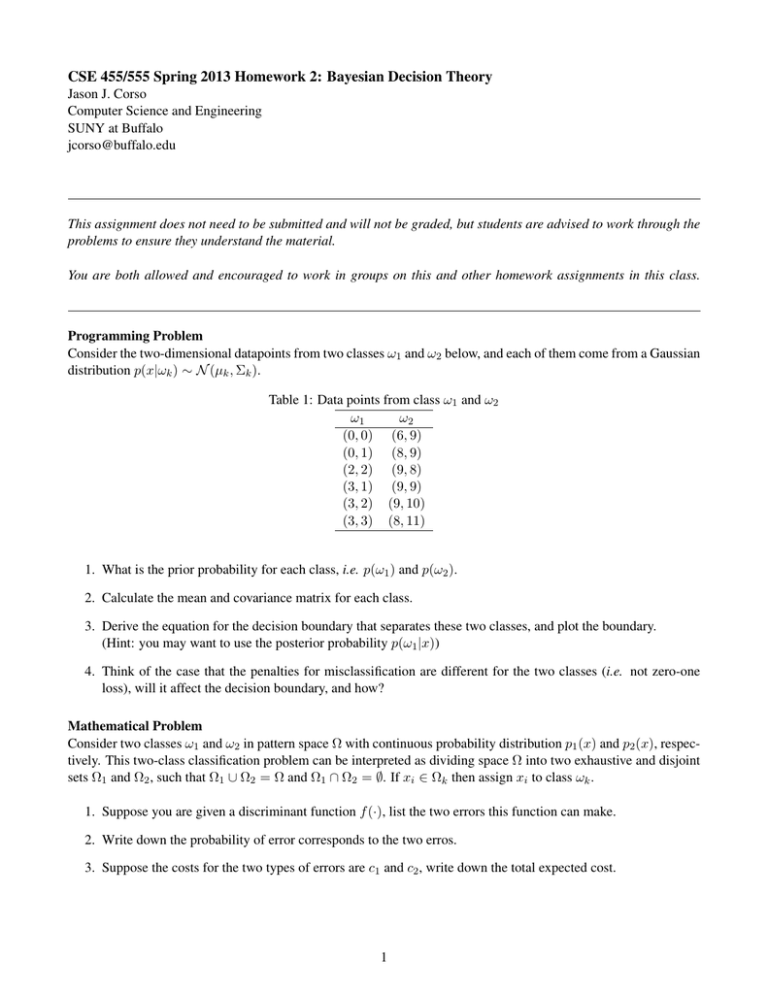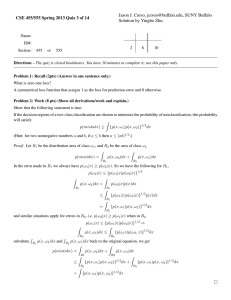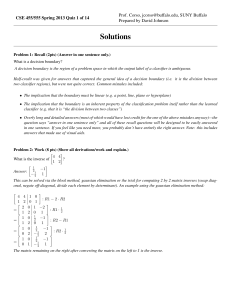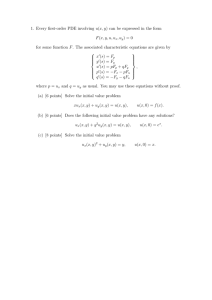Bayesian Decision Theory Homework: SUNY CSE 455/555
advertisement

CSE 455/555 Spring 2013 Homework 2: Bayesian Decision Theory Jason J. Corso Computer Science and Engineering SUNY at Buffalo jcorso@buffalo.edu This assignment does not need to be submitted and will not be graded, but students are advised to work through the problems to ensure they understand the material. You are both allowed and encouraged to work in groups on this and other homework assignments in this class. Programming Problem Consider the two-dimensional datapoints from two classes ω1 and ω2 below, and each of them come from a Gaussian distribution p(x|ωk ) ∼ N (µk , Σk ). Table 1: Data points from class ω1 and ω2 ω1 ω2 (0, 0) (6, 9) (0, 1) (8, 9) (2, 2) (9, 8) (3, 1) (9, 9) (3, 2) (9, 10) (3, 3) (8, 11) 1. What is the prior probability for each class, i.e. p(ω1 ) and p(ω2 ). 2. Calculate the mean and covariance matrix for each class. 3. Derive the equation for the decision boundary that separates these two classes, and plot the boundary. (Hint: you may want to use the posterior probability p(ω1 |x)) 4. Think of the case that the penalties for misclassification are different for the two classes (i.e. not zero-one loss), will it affect the decision boundary, and how? Mathematical Problem Consider two classes ω1 and ω2 in pattern space Ω with continuous probability distribution p1 (x) and p2 (x), respectively. This two-class classification problem can be interpreted as dividing space Ω into two exhaustive and disjoint sets Ω1 and Ω2 , such that Ω1 ∪ Ω2 = Ω and Ω1 ∩ Ω2 = ∅. If xi ∈ Ωk then assign xi to class ωk . 1. Suppose you are given a discriminant function f (·), list the two errors this function can make. 2. Write down the probability of error corresponds to the two erros. 3. Suppose the costs for the two types of errors are c1 and c2 , write down the total expected cost. 1











